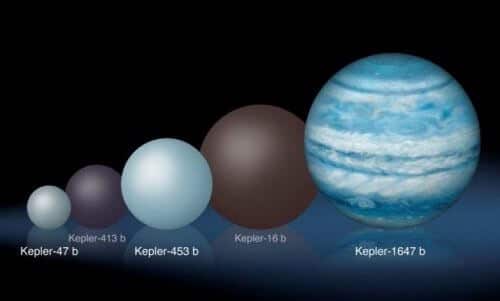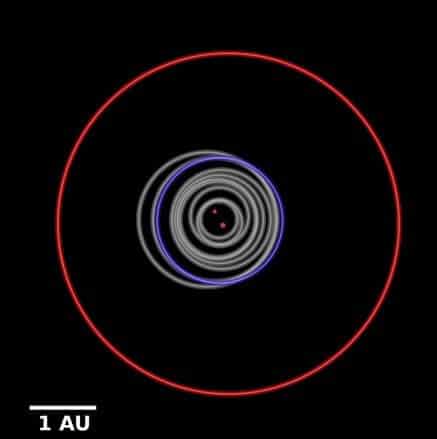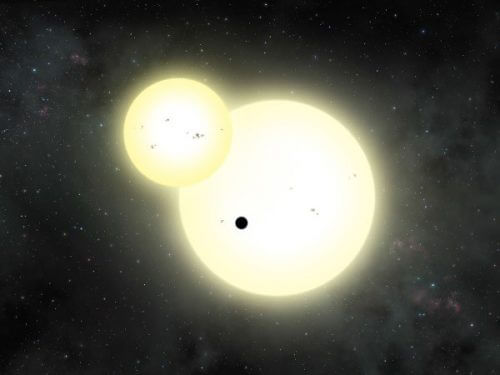Kepler 1647b is about 3,700 light-years away from us and is about 4.4 billion years old, more or less the age of the Earth. The two stars in the binary system are similar to the sun, one larger and the other slightly smaller than it. The planet has a mass and radius almost identical to those of Jupiter, making it the largest planet orbiting a binary system.

If we turn our eyes towards the Cygnus constellation, we will also aim towards the largest planet discovered so far, and it has another peculiarity, it orbits a double star. Although both suns are also difficult to see with the naked eye, a team led by astronomers from NASA's Goddard Space Flight Center in Greenbelt, Maryland and California State University in Las Vegas used NASA's Kepler Space Telescope to identify the new star, Kepler 1647b.
The discovery caused a stir after it was announced at a meeting of the American Astronomical Society in San Diego. The study was accepted for publication in the Astrophysical Journal. The lead author of the paper is Veselin Kostov, a postdoctoral fellow at NASA's Goddard Center.

Kepler 1647b is about 3,700 light-years away from us and is about 4.4 billion years old, more or less the age of the Earth. The two stars in the binary system are similar to the sun, one larger and the other slightly smaller than it. The planet has a mass and radius almost identical to those of Jupiter, making it the largest planet orbiting a binary system.
The planets surrounding two stars are known as circumbinary planets or Tatooine-type planets after the home world of Luke Skywalker in "Star Wars". Using Kepler data of bodies suspected to be solar systems, the astronomers look for slight decreases in the star's brightness that suggest a planet that may pass in front of the star, blocking some of the starlight.
"But finding planets orbiting a double star system is more difficult than finding planets orbiting single suns," says William Walsheth of the University of San Diego and one of the authors of the study. "The transitions are not uniform in time and can change in duration and even in depth."

"It's a little strange that it took so long to confirm the planet since it's easier to detect large planets than small ones," said Jerome Ursuz, a San Diego-based astronomer and co-author of the paper. "But this is due to the long orbit of the planet.
The planet takes 1,107 days – just over three years to orbit its host stars – longer than any other circumbinary planet discovered so far. Its orbit is also distant, and differs from the usual tendency of these systems to orbit close to one of the stars. This also places it deep within the life strip of the star it orbits. Although, like Jupiter, Kepler 1647b is also a gas giant, which makes Oo unlikely to host life, but if it has large moons, they may be suitable for life.
To the announcement of the researchers on the NASA website
More of the topic in Hayadan:
The double sunset that Luke Skywalker saw on Tatooine is no fantasy
